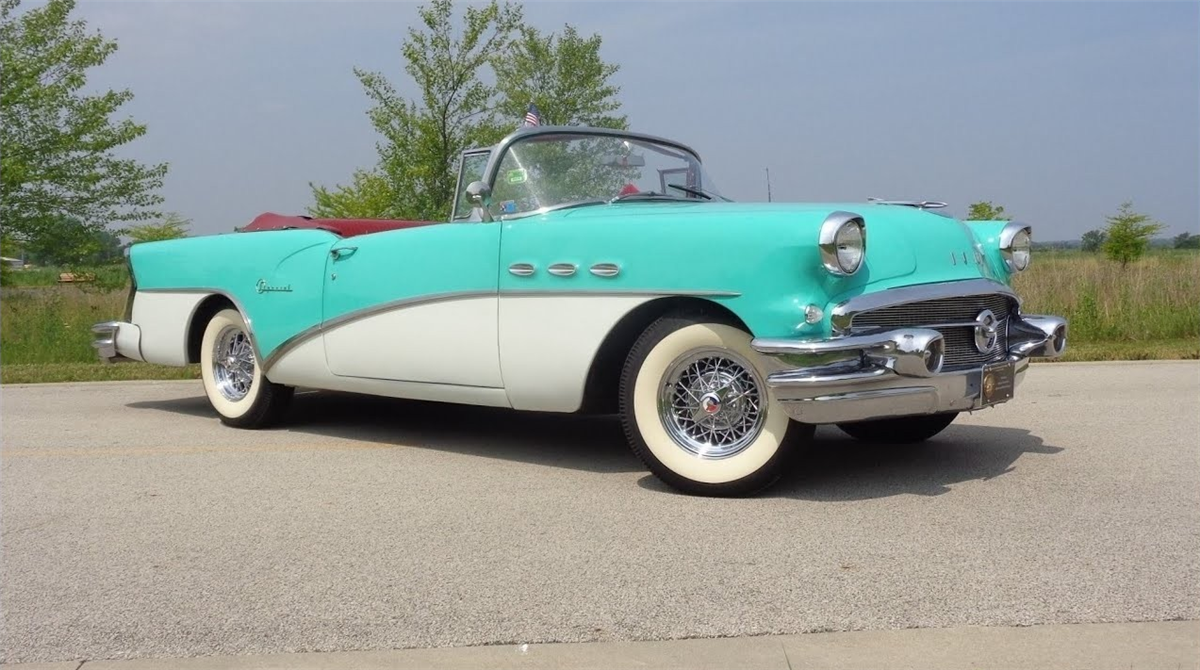Buick is a national treasure in American automotive history, as the country’s longest surviving vehicle manufacturer. General Motors’ luxury brand was the financial founding father of a company that would grow to become the world’s largest automaker. In 1955, the division achieved its highest sales performance to that moment, ranking third in the United States behind Chevrolet relatives and Ford rivals.
While that may not appear to be a performance, we must remember that Buick was a luxury brand with no low-price edge over the other two. Following that remarkable performance, 1956 was a year of high expectations, and Buick did not disappoint.
It didn’t beat the previous year’s sales high-water marks, but it still scored a solid 574,024 cars sold, down from 738,894 in 1955. The economic recession that swept across America in the second half of the fifties was taking its toll on the car-building business,
Naturally, the least sought-after models were the relatively less convenient convertibles. Buick offered a broad range of models from its four series of automobiles. Eighteen different variations, from the entry-level Specials to the top-of-the-line Roadmasters.

By far, the best-seller was the Riviera, with a combined performance of some 204,000 units; put it this way – one in three Buicks sold for the 1956 model year was sporting the iconic nameplate. The four-door sedan was in high demand, with 91,025 automobiles produced, but the number one money-maker was the two-door hardtop, at almost 114,000.
Both cars fell under the Special range, alongside the regular, non-Riviera versions (that also came in two body styles, two- and four-door sedans). Alongside them rode the estate wagon and the Convertible Coupe. This is the one we’re interested in because one of them is seen in the movie below and is a legitimate factory-built example that sees regular road use. According to the owner, the engine has never been removed from its compartment in its 87,344-mile lifespan. That’s 140,537 kilometers from the 1956 Fireball V8 we’re talking about.
This car has been spared the abuses of hot-rodding, racing, demolition derbies, and general wear and tear from less-than-perfect upkeep over the years. The numbers-matching Buick did get a makeover, and the inside got new upholstery, but that was about it. Don’t say anything about the Kelsey Hayes wheels not being factory-equipped on the car – they still look the part. The 1956 Buicks had a 322 cubic-inch eight-cylinder engine tuned to two specifications. In the Special, the V8 punched out 220 horsepower and 319 lb-ft of torque (223 PS / 433 Nm).
At the same time, the Century, Super, and Roadmaster series had a more respectable 255 hp and 341 lb-ft (259 PS / 462 Nm), thanks to a compression ratio of 9.5:1, as opposed to the 8.9:1 in the Special.
Also, the low-priced series had a two-barrel carb on top of the engine (a 4V was optional), fed with ram air induction from the hood scoop carved under the jet plane ornament. The air filter and aid inlet are connected via a massive tunnel-like duct – see it in the video below. As for that new-age airplane tribute, it served a dual purpose. Apart from looking patriotically cool, it also kept the car on track.

Or, more accurately, it helped the driver stay in the lane. When looking from behind the steering wheel, if the airplane was aligned with the side marking line of the road, then the Buick was dead-center on its lane. Nice feature, although I don’t think General Motors engineers and designers gave it that much thought to measure, calculate, and plan their car to have this driver aid. But it’s a nice game– fly the hood ornament over the white line to stay on the road. The Continental kit on the back was a dealer-installed option, making the Special look more special. Still, it also had a detrimental effect on the car. As reported by owners back then, the rear suspension wasn’t particularly stiff – Buick was all about ride smoothness in the fifties – and the springs had to endure the extra weight of the Connie option.
Since the load sat at the end of an already long overhang (a common feature in ‘56), the stress on the oil shocks and coils somewhat altered the ride quality. However, that would only be felt on rough roads – and ‘verts weren’t about going off the beaten path.
9,712 Buick Special Convertibles were assembled in 1956 – the largest ragtop Buicks of the four series. The Super, Century, and Roadmaster Convertible Coupes accounted for 11,564 units. When Ike Eisenhower was in the White House, a new drop-top Buick Special had a price tag of $2,740 (before any optional equipment was thrown in).
This car in our scenario has a limited number of options. Along with the contentious Continental package with the large and gleaming chromed protection cover for the spare tire, extra-cost options include the Selectronic radio, dual exhausts, and heater and defroster. The hands-free engine start is a remarkable feature of this car; watch the owner power it up by simply stepping on the gas pedal.
About this particular detail (the gas, I mean) – the ribbon speedometer is in line with the fuel gauge (also fashioned like a color-changing bar). At speeds over 70 mph, the speed indicator would turn red – a sign that the car was going too fast. Just as fast, the fuel tank bar was turning red (when a lead-footed driver got behind the wheel).
